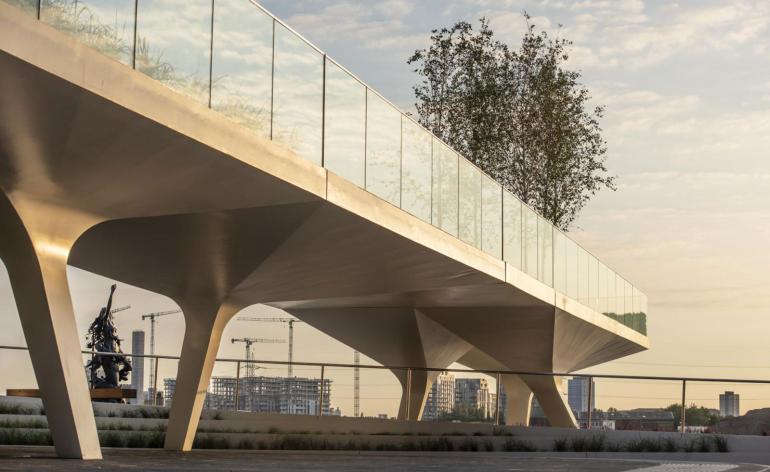An exclusive look at the upcoming Design District at Greenwich Peninsula
London's Greenwich Peninsula is in the process of getting its own Design District, set to launch its curated collection of architectural workspaces in autumn 2020 and featuring bespoke and flexible office building designs by the likes of architects such as 6a, Adam Khan, Architecture 00, Barozzi Veiga, David Kohn, HNNA, Mole Architects and Selgas Cano
Taran Wilkhu - Photography
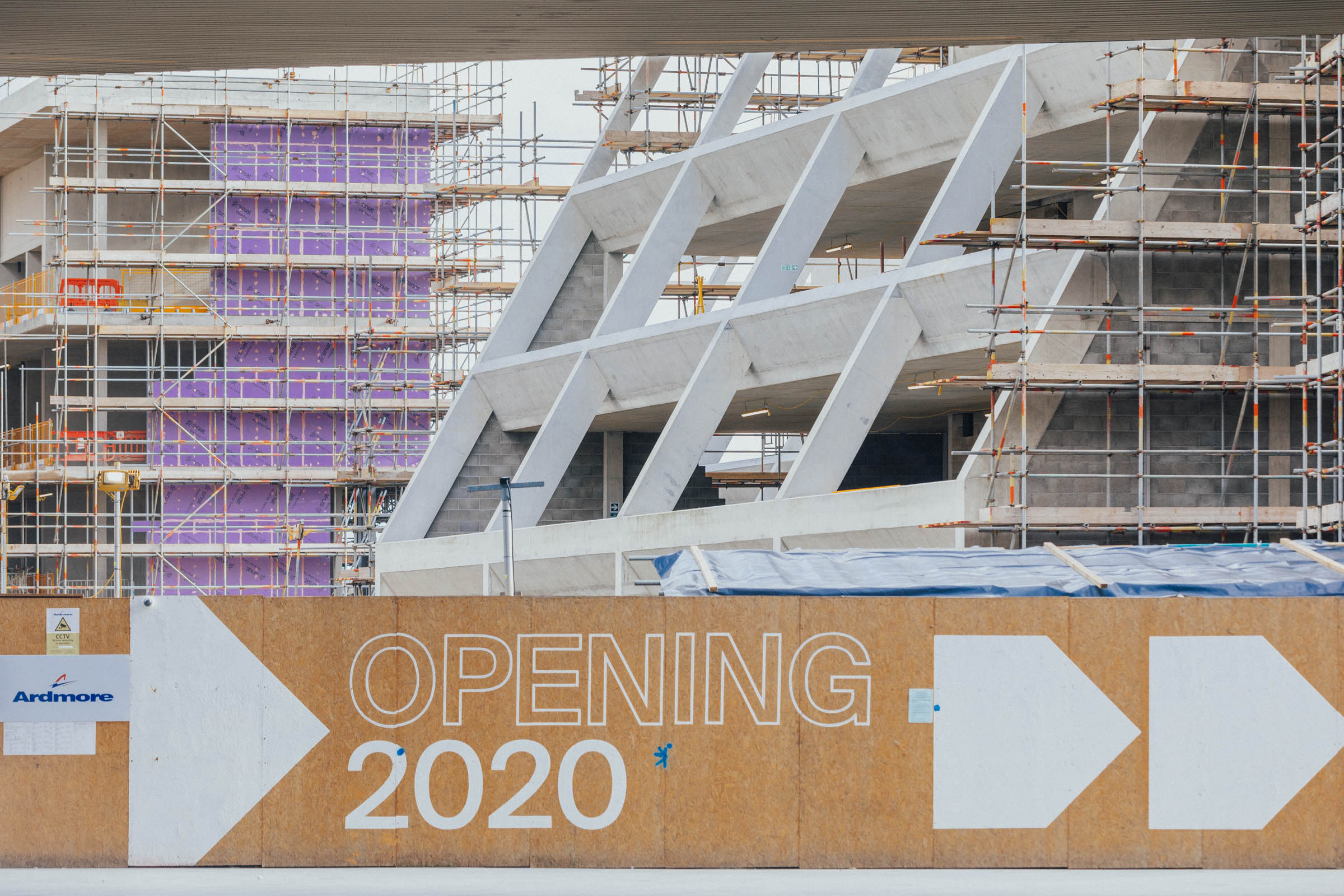
In these times of uncertainty, we find that turning our gaze towards the future into exciting projects to look forward to helps, so we decided to take a sneak peek into the building works taking place at Greenwich Peninsula's Design District. The upcoming creative hub has been deep into construction mode for about a year now, slowly bringing its carefully curated cluster of buildings to life.
If you were not aware of this new London district, this will soon change, as the scheme is set to bring together makers and thinkers in the fields of design, art, tech, food, fashion, craft and music in a single development offering an impressive 134,000 sq ft of workspace for some 1,800 creatives – from start-ups and individual makers, to household-names. Spearheaded by local developers Knight Dragon (also behind urban additions such as Diller Scofidio + Renfro's The Tide, which opened to the public last year), and conceived in partnership with the GLA, the project is a composition of 16 individual, architecturally led buildings by eight different architects in a one-hectare plot.
So what makes this Design District different from similar hubs? ‘Compared to the approach usually taken in such projects, the ambition for the Design District is extraordinary: to create a permanent location for creative enterprise in London, and to give it a varied, permeable heart,' says Hannah Corlett, the Design District's masterplanner and founding director of HNNA. ‘That’s a challenging brief, especially considering that all structures had to be low cost to ensure tenant rents could be kept affordable.'
‘The conventional approach would be to have a single architect design a single, large, industrial shed (neither varied nor permeable), so getting eight architects to design 16 separate buildings is unorthodox, to say the least. Plus, as master planners for the project, we purposely didn't impose the usual design codes but instead encouraged the architects to innovate with building massing and materials within set floorplates – which we believe makes the Design District an unprecedented urban development project.'
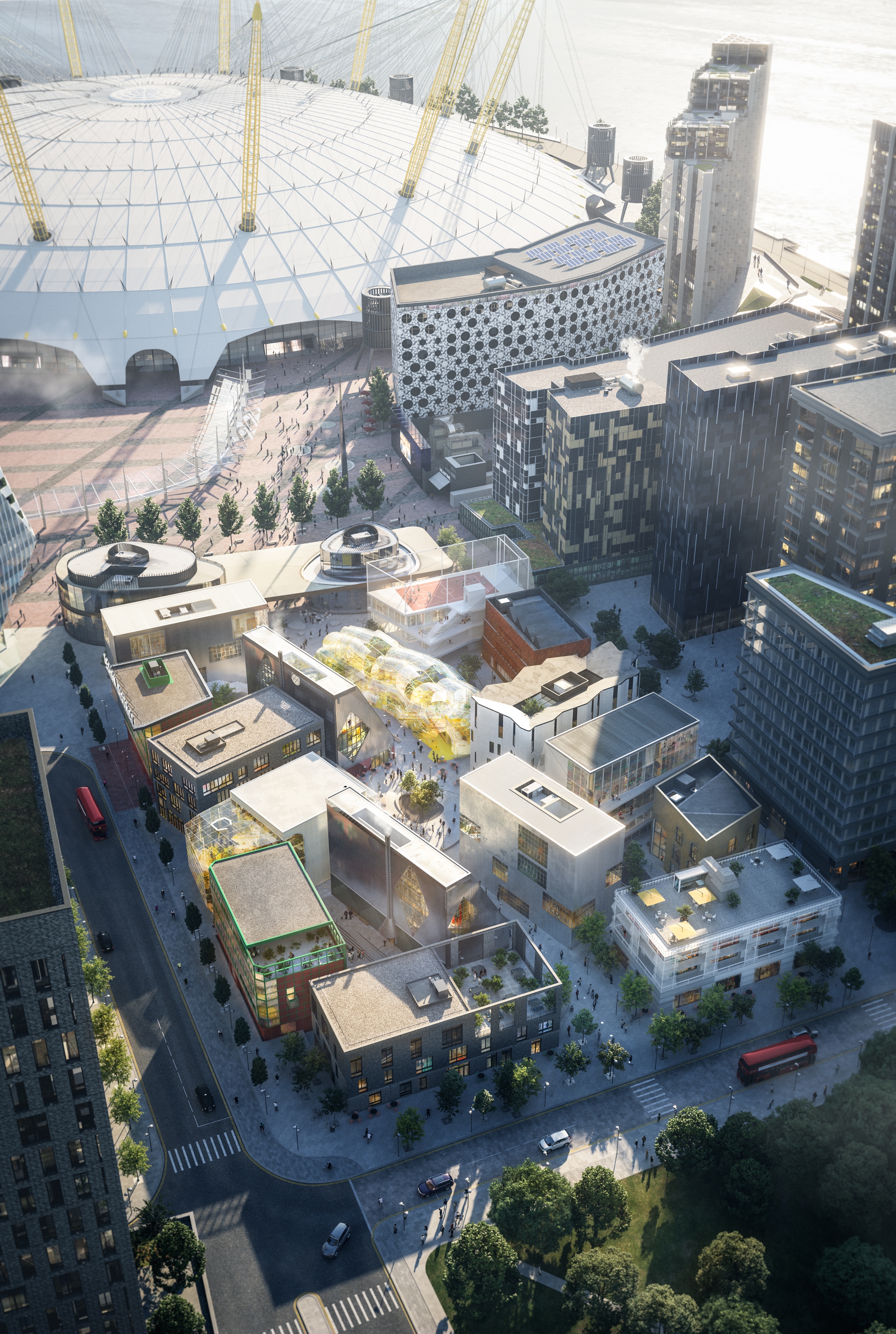
The diversity in this scheme is incredible, but what could have been a rather out-of-sync melange of different styles, actually seems to come beautifully together in a fun composition that has something for everyone. There is a clean, raw, geometric design by 6a Architects and a timber clad interior with a distinctive white, wavy facade by HNNA, next to a transparent and organically shaped food market pavilion by Selgas Cano and a building with a public (rentable) rooftop sports pitch by Architecture 00. The contributing architects – well known, dynamic firms also including Adam Khan, Barozzi Veiga, David Kohn and Mole Architects – were handpicked by the client and Corlett.
RELATED STORY
‘They had to: show experience of innovative design; demonstrate inventive use of materials; be undeterred by budget size within their designs; and be small enough for the studio heads to be directly involved in the project from conception to completion,' explains Corlett. ‘The most influential factor, however, was our determination that the selection of the architects should demonstrate a mixed voice. We wanted a wide variety of structures that would allow for diverse tastes. Both HNNA and the client were very prepared for there to be ‘Marmite buildings’ in the mix, which would split opinions and spark debate.'
Keeping costs low and variety high were major factors, she adds. ‘Throughout the project, our watchwords have been: low-cost, diverse, productive, human-scale, open and immersive.' This included decisions such as creating a single lift core and stair in each building to promote natural ventilation, reducing costs and energy consumption, for example.
Strategic masterplanning led to the arrangement of the new structures in clusters, creating ‘mini-neighbourhoods' and courtyards, which tenants can share. The market building is placed at the plot's heart, which also sits on the axis that runs through the site connecting the nearby tube station with local housing. This will ensure the area blends seamlessly with its surroundings and soon becomes an integral part of the Greenwich Peninsula daily life.
The scheme – while building works have now paused due to current developments in the capital – is due to complete soon, the first few buildings ready to receive first tenants later in the year.




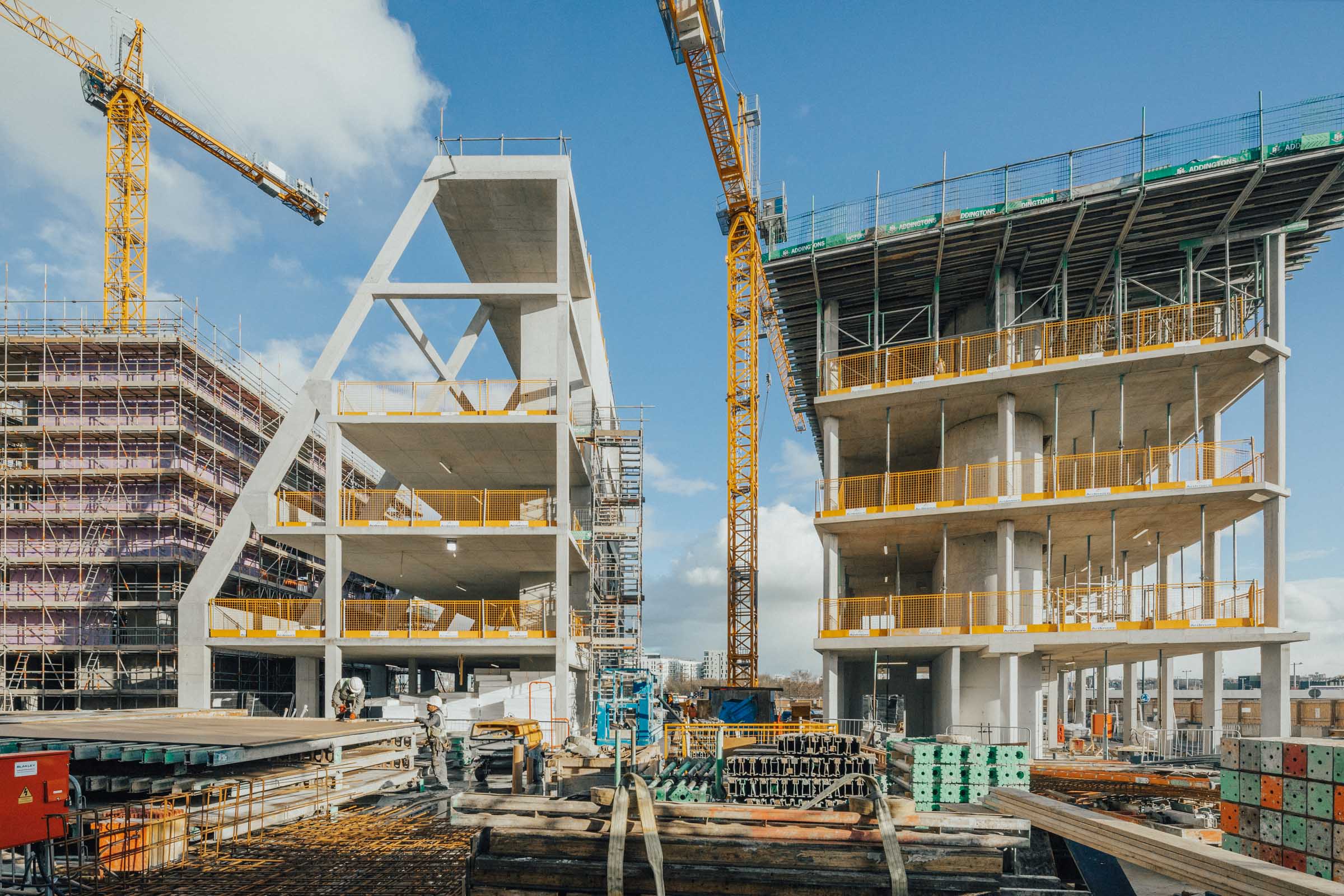
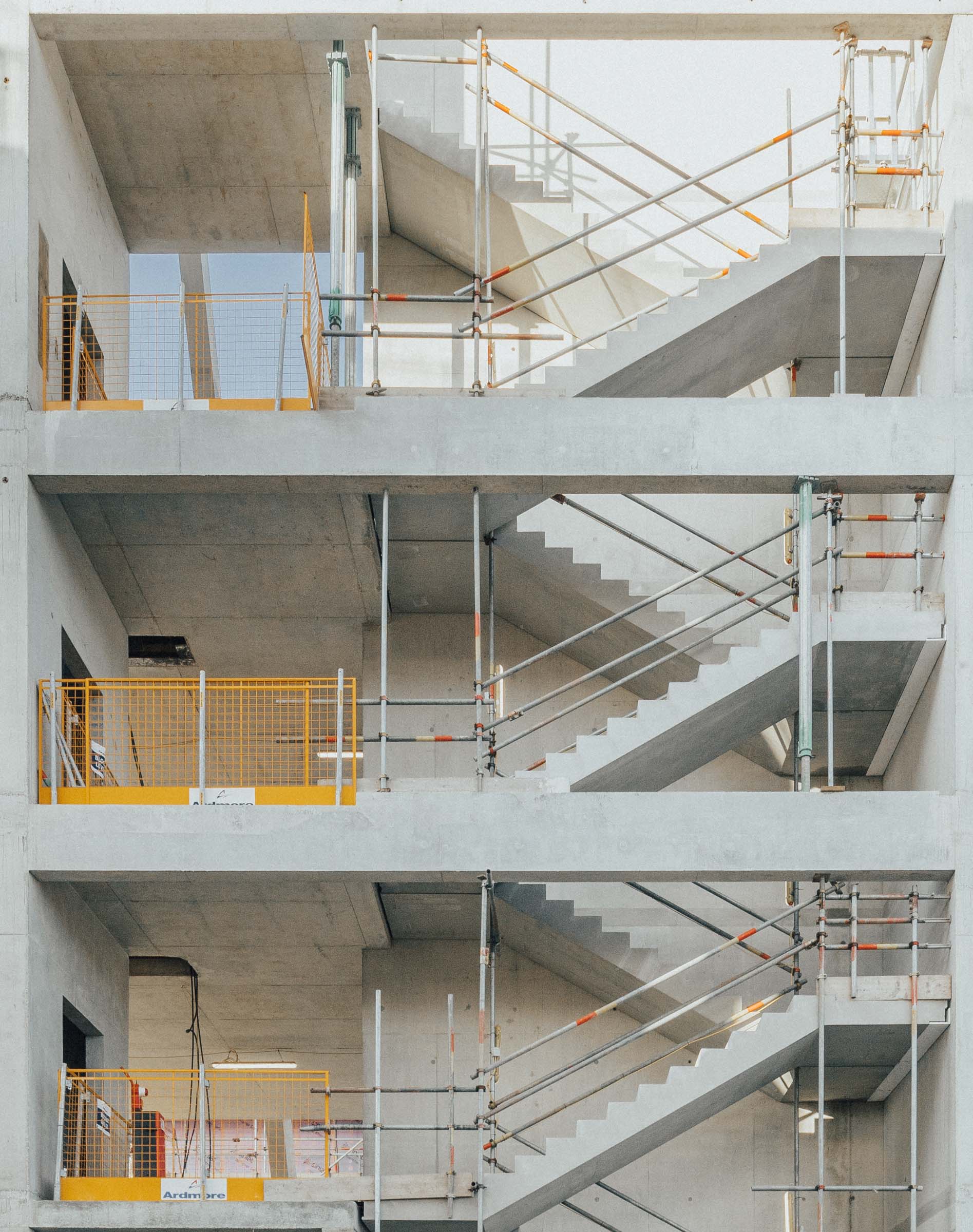

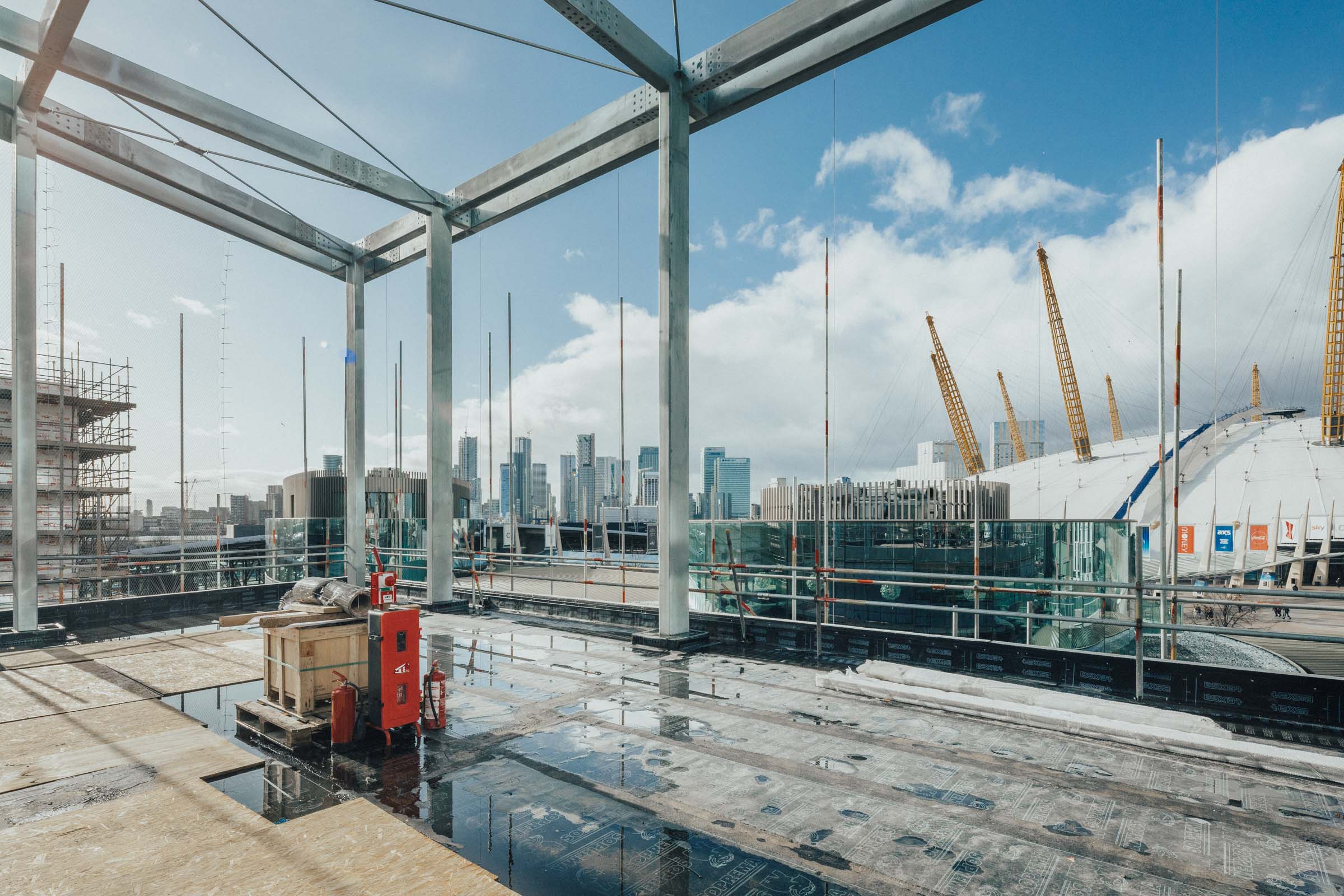
INFORMATION
Receive our daily digest of inspiration, escapism and design stories from around the world direct to your inbox.
Ellie Stathaki is the Architecture & Environment Director at Wallpaper*. She trained as an architect at the Aristotle University of Thessaloniki in Greece and studied architectural history at the Bartlett in London. Now an established journalist, she has been a member of the Wallpaper* team since 2006, visiting buildings across the globe and interviewing leading architects such as Tadao Ando and Rem Koolhaas. Ellie has also taken part in judging panels, moderated events, curated shows and contributed in books, such as The Contemporary House (Thames & Hudson, 2018), Glenn Sestig Architecture Diary (2020) and House London (2022).
-
 Year in Review: we’re always after innovations that interest us – here are ten of 2025’s best
Year in Review: we’re always after innovations that interest us – here are ten of 2025’s bestWe present ten pieces of tech that broke the mould in some way, from fresh takes on guitar design, new uses for old equipment and the world’s most retro smartwatch
-
 Art and culture editor Hannah Silver's top ten interviews of 2025
Art and culture editor Hannah Silver's top ten interviews of 2025Glitching, coding and painting: 2025 has been a bumper year for art and culture. Here, Art and culture editor Hannah Silver selects her favourite moments
-
 In Norway, remoteness becomes the new luxury
In Norway, remoteness becomes the new luxuryAcross islands and fjords, a new wave of design-led hideaways is elevating remoteness into a refined, elemental form of luxury
-
 This curved brick home by Flawk blends quiet sophistication and playful details
This curved brick home by Flawk blends quiet sophistication and playful detailsDistilling developer Flawk’s belief that architecture can be joyful, precise and human, Runda brings a curving, sculptural form to a quiet corner of north London
-
 A compact Scottish home is a 'sunny place,' nestled into its thriving orchard setting
A compact Scottish home is a 'sunny place,' nestled into its thriving orchard settingGrianan (Gaelic for 'sunny place') is a single-storey Scottish home by Cameron Webster Architects set in rural Stirlingshire
-
 Porthmadog House mines the rich seam of Wales’ industrial past at the Dwyryd estuary
Porthmadog House mines the rich seam of Wales’ industrial past at the Dwyryd estuaryStröm Architects’ Porthmadog House, a slate and Corten steel seaside retreat in north Wales, reinterprets the area’s mining and ironworking heritage
-
 Arbour House is a north London home that lies low but punches high
Arbour House is a north London home that lies low but punches highArbour House by Andrei Saltykov is a low-lying Crouch End home with a striking roof structure that sets it apart
-
 A former agricultural building is transformed into a minimal rural home by Bindloss Dawes
A former agricultural building is transformed into a minimal rural home by Bindloss DawesZero-carbon design meets adaptive re-use in the Tractor Shed, a stripped-back house in a country village by Somerset architects Bindloss Dawes
-
 RIBA House of the Year 2025 is a ‘rare mixture of sensitivity and boldness’
RIBA House of the Year 2025 is a ‘rare mixture of sensitivity and boldness’Topping the list of seven shortlisted homes, Izat Arundell’s Hebridean self-build – named Caochan na Creige – is announced as the RIBA House of the Year 2025
-
 In addition to brutalist buildings, Alison Smithson designed some of the most creative Christmas cards we've seen
In addition to brutalist buildings, Alison Smithson designed some of the most creative Christmas cards we've seenThe architect’s collection of season’s greetings is on show at the Roca London Gallery, just in time for the holidays
-
 In South Wales, a remote coastal farmhouse flaunts its modern revamp, primed for hosting
In South Wales, a remote coastal farmhouse flaunts its modern revamp, primed for hostingA farmhouse perched on the Gower Peninsula, Delfyd Farm reveals its ground-floor refresh by architecture studio Rural Office, which created a cosy home with breathtaking views
